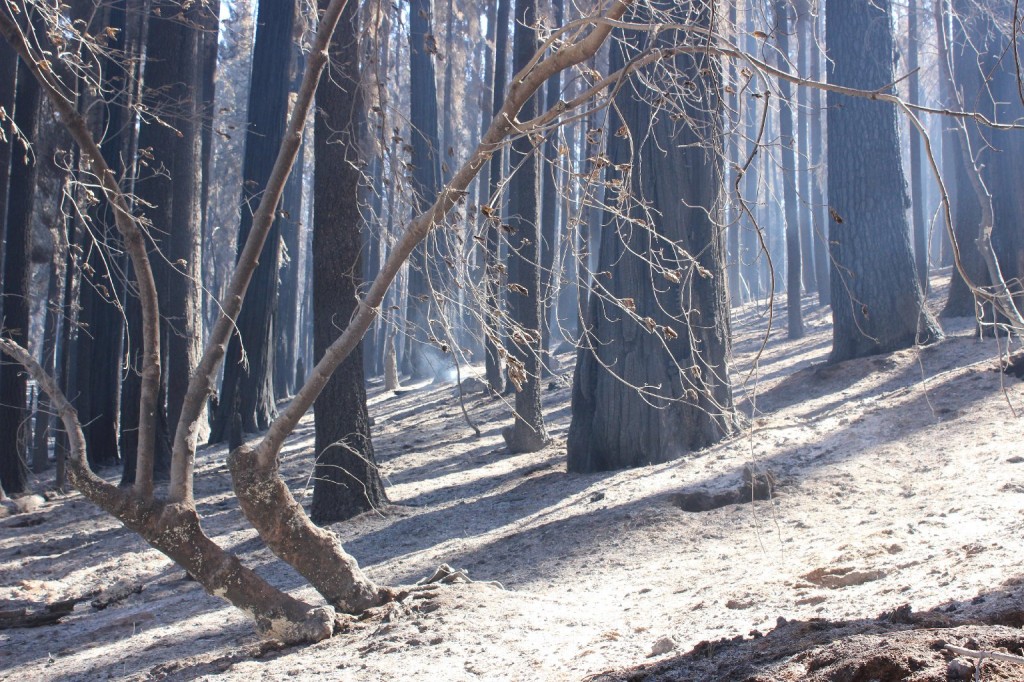
Scientists and land managers are combing the 400 square miles of woodland burned by the Rim Fire since mid-August to learn what they can about how to handle such massive blazes in the future—or how to prevent them from getting so big and intense in the first place.
KQED’s Lauren Sommer reports that one of the factors that made the Rim Fire so destructive is that Stanislaus National Forest, like most of the land managed by the U.S. Forest Service, has not been thinned out, either by fire or artificial means, in decades and decades. Here’s one scene that Sommer encountered during her reporting:
“The trees we see here today aren’t going to make it,” says Forest Service ecologist Carol Ewell, slogging through a foot of powdery white ash amid seemingly endless stands of blackened tree trunks.
The trees in this part of the Stanislaus National Forest are bare, with no pine needles and few branches remaining.
“We use the word, it was ‘torched,” Ewell says. “The fire went all the way up the crown.” About 40 percent of the vegetation in the fire burned at this kind of “high severity” and is unlikely to survive, according to Forest Service estimates.
Ewell and Stanislaus National Forest fire planner Shelly Crook are doing some “fire forensics,” cataloging the damage to assess how past fuel reduction projects fared in the blaze.
The dense trees in this stand, just 3 and 4 feet apart, remind Crook of a teenager’s bedroom.
“What happens if you let him go three years without cleaning their room,” she offers. “You know what the room is going to look like. So that’s what the forest is — and the vacuum cleaner out here is fire.”
So: How to clean up the forests without resorting to that vacuum cleaner? One suggestion is to more actively thin forests and to use the cut trees and other scrap for fuel to power biomass facilities that could supply local communities with electricity. But as Sommer reports, there are unresolved questions about the environmental and climate-change impacts of burning forest scraps for energy.
